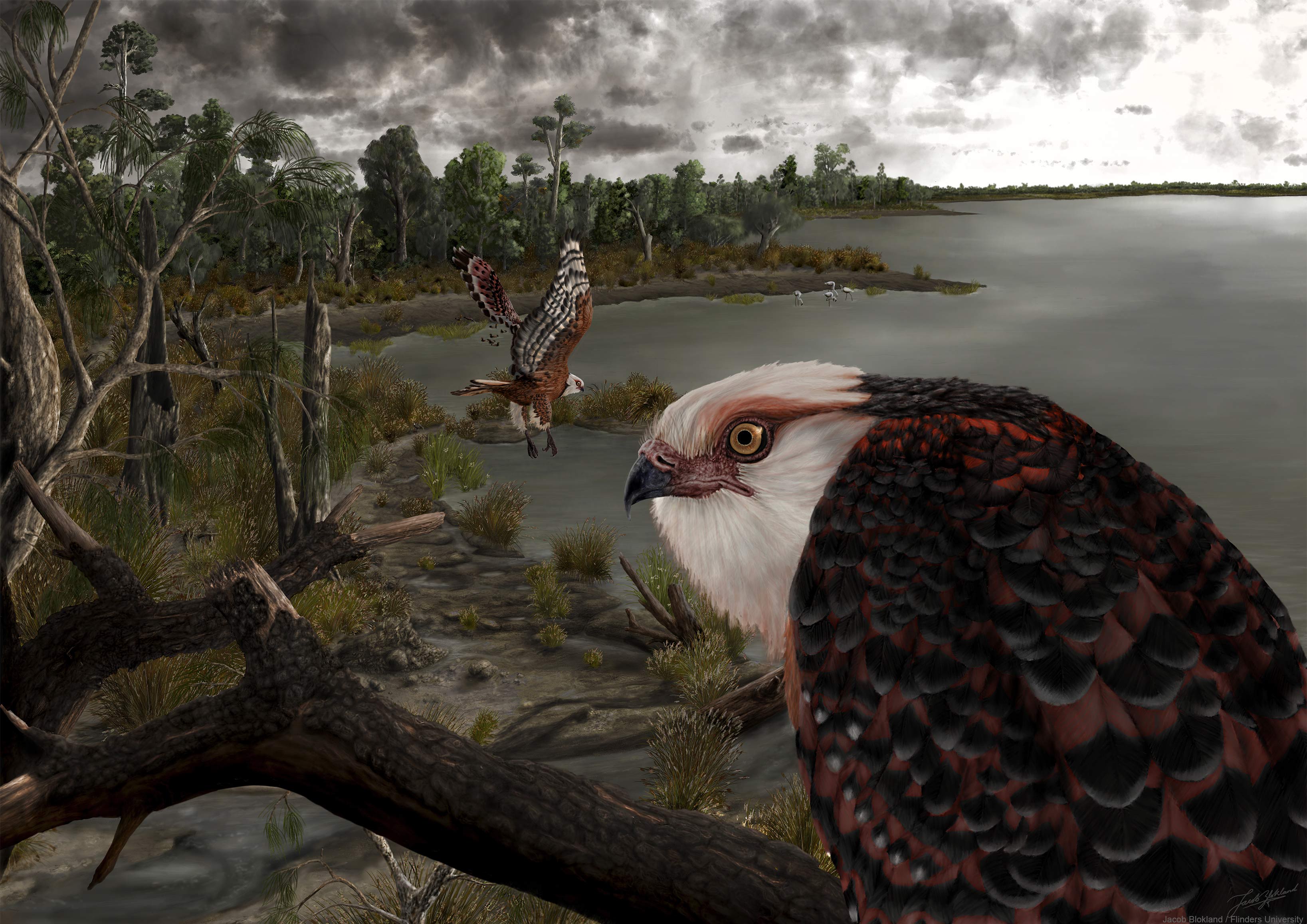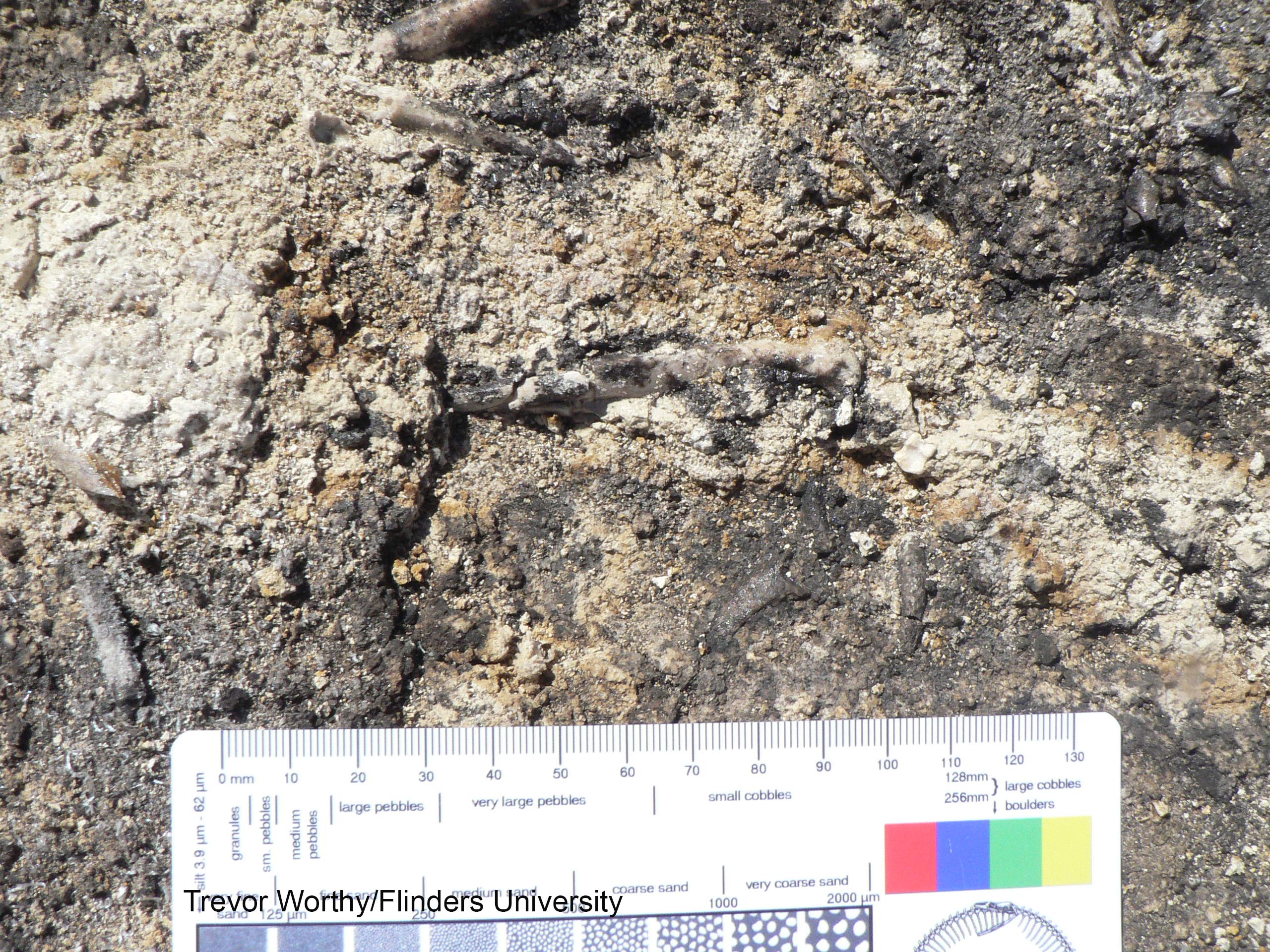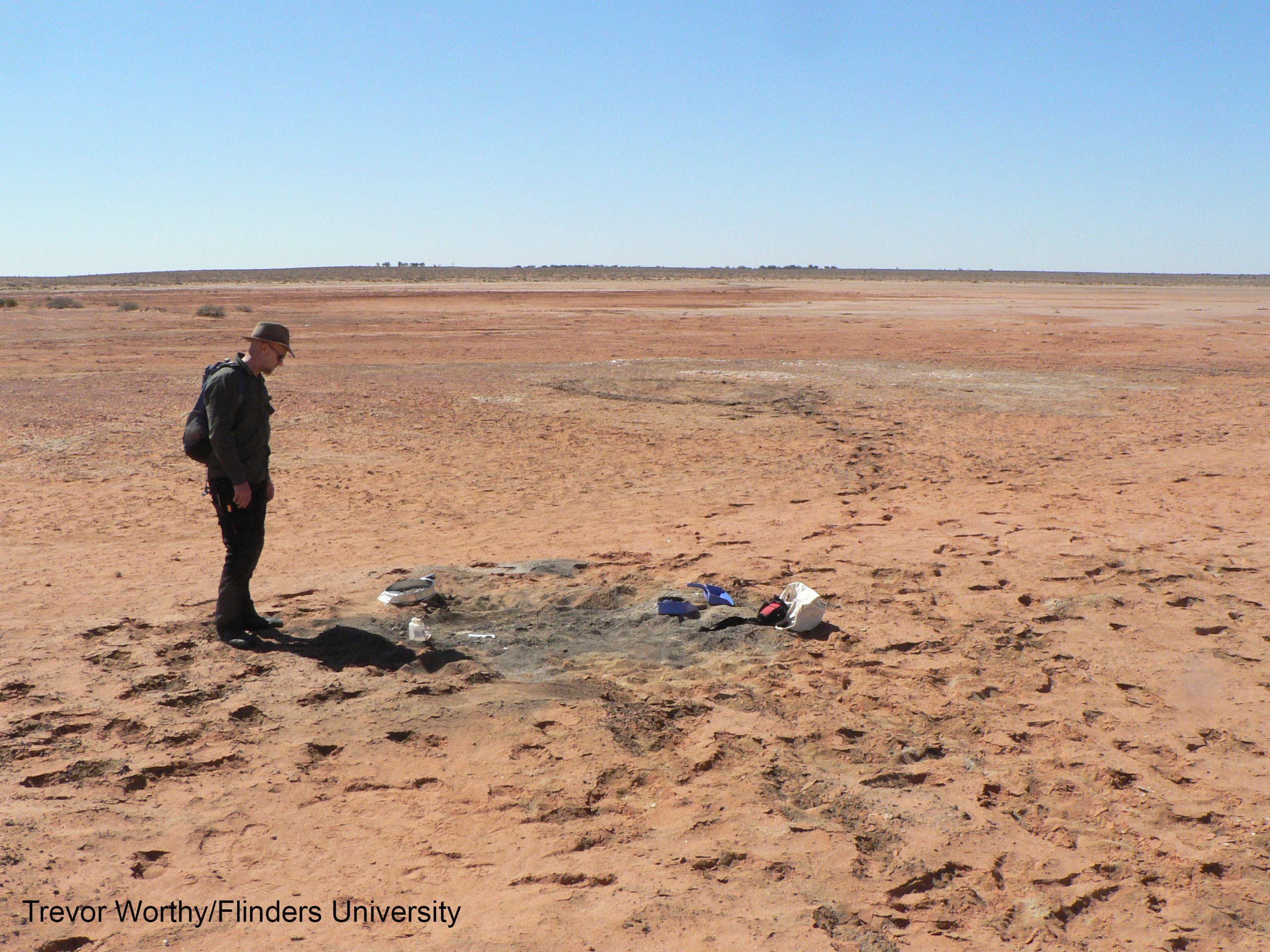Scientists have confirmed the discovery of a nearly complete fossil of a 25-million-year-old eagle that once flew over South Australia and preyed on koalas - an incredibly rare find because of how well preserved it is, experts say.
The newly discovered species, Archaehierax sylvestris, is one of the oldest eagle-like raptors in the world, according to a study published Monday in the peer-reviewed journal, Historical Biology.
Paleontologists from Adelaide's Flinders University unearthed the fossil in March 2016 on a remote outback cattle station during a research trip at Lake Pinpa in South Australia.
READ MORE: World's biggest triceratops skeleton up for auction

Archaehierax is the largest eagle known to have lived in Australia during the Oligocene period, which dates back about 33.9 million to 23 million years ago, the study said.
It was smaller and more slender than the wedge-tailed eagle, Australia's largest bird of prey, according to the Western Australian Museum.
With feet nearly 15 centimetres long, the eagle would have had the ability to grasp large prey. The scientists said it would have hunted an extinct species of koala, which was about the same size as those alive today, as well as possums and other animals in trees, the study said.
READ MORE: NASA's newest satellite launches into space

"The largest marsupial predators at the time were about the size of a small dog or large cat, so Archaehierax was certainly ruling the roost," Ellen Mather, author of the study and Flinders University postdoctoral candidate, said in a statement.
The partial fossil skeleton is comprised of 63 bones, making Archaehierax sylvestris one of the best preserved species found around Lake Pinpa. The completeness of the skeleton allowed researchers to determine where it fits on the eagle family tree, Ms Mather said.

"It shows a range of features unlike any seen among modern hawks and eagles," she said. "It seems to have been its own unique branch of the eagle family."
The fossil bones reveal that the wings of the species were short for its size, which made them quite agile and allowed them to dodge trees while it hunted. Its legs were relatively long, which would have given it considerable reach.
Scientists did not say why or when the species went extinct.
The Australian environment during the Oligocene was vastly different to today. Lake Pinpa, where the fossil was found, was once a lush ecosystem covered in trees and forests, the study said. Today, it is barren, dry and desolate.
Trevor Worthy, associate professor at Flinders University and co-author of the study, said in the statement that it is rare to find even one bone from a fossil eagle. This is likely due to a number of reasons, Mather added, including that bird bones can be quite fragile, which makes them easier to break.
"To have most of the skeleton is pretty exciting, especially considering how old it is," Mr Worthy said.
Researchers have made a number of fossil discoveries in Australia over the years, shedding light on the diversity of species that roamed the Earth eons ago.
Most recently, scientists discovered that there once was a species of flying "dragon" that soared over Australia 105 million years ago. The pterosaur was described by researchers as a "fearsome beast" who snacked on juvenile dinosaurs.
In June, scientists confirmed that the 2007 discovery of a fossilised skeleton in the state of Queensland was Australia's largest dinosaur. The dinosaur, nicknamed "Cooper," stood at about two stories tall, and was a as long as a basketball court.
from 9News https://ift.tt/2ZFcZQi
via IFTTT


0 Comments